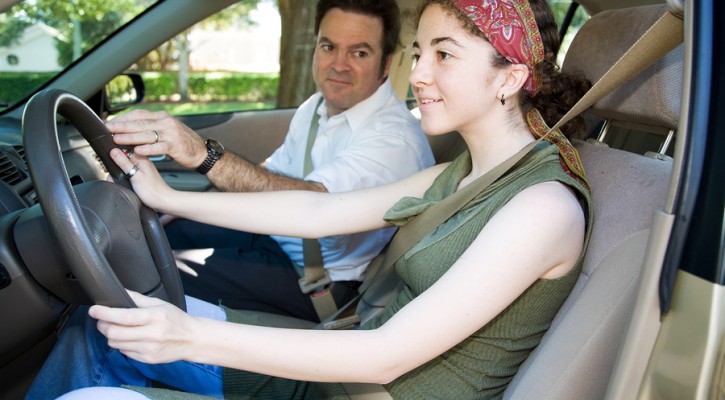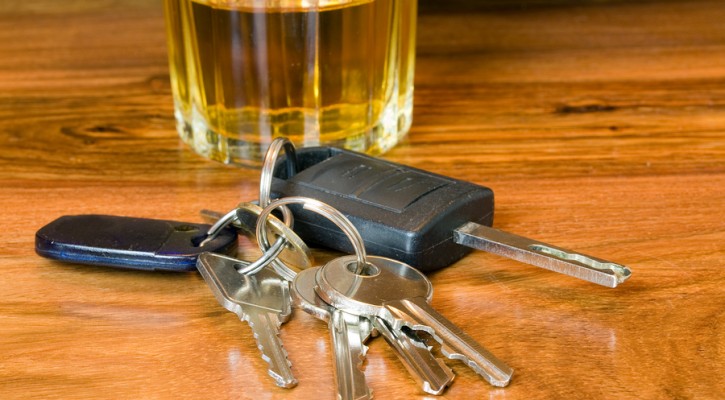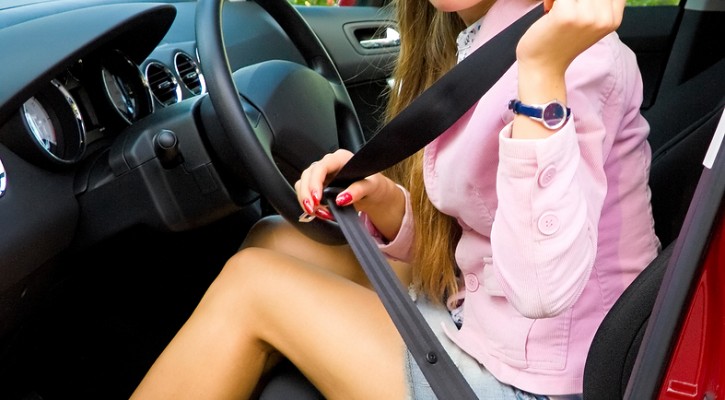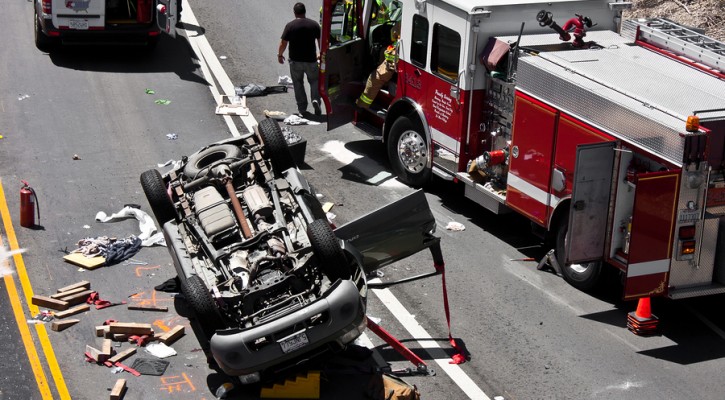Tag Archive: Teen drivers

Support for Graduated Driver Licensing Laws
April 30, 2009
According to the National Highway Safety Administration (NHTSA), adolescent drivers, especially 16- to 17-year olds, are disproportionately involved in deadly motor vehicle crashes. Sixteen-year old drivers have crash rates that are about three times greater than 17-year-old drivers, five times greater than 18-year-old drivers, and approximately twice the rate of 85-year-old drivers. According to the NHTSA and the Insurance Institute for Highway Safety (IIHS), specific contributors to these higher crash rates include:
- Lack of driving experience and skills: Compared with crashes of older drivers, those of 16-year-olds more often involve driver error.
- A propensity towards risk taking behavior and poor decision-making.
- Driving at night: Per mile driven, the nighttime fatal crash rate for 16-year-old drivers is twice as high as during daytime hours.
- Distraction from teenage passengers: Fatal crashes involving 16-year-old drivers are more likely to take place when other teens are in the vehicle, and the risk increases with every additional passenger.
- Speeding: Sixteen-year old drivers have a higher rate of crashes in which excessive speed is a contributing factor.
Graduated Driver Licensing (GDL) programs help young drivers get driving experience progressively while minimizing risk, beginning with a restricted permit and eventually leading to full licensure.
Most programs include three stages:
- Learner Stage: Supervised driving, ending with a road test.
- Intermediate Stage: Limiting unsupervised driving in high-risk circumstances.
- Full Privilege Stage: A regular driver’s license.
Provisions of graduated licensing laws may include:
- Required hours of adult supervision during the learner stage.
- Restrictions on late-night driving.
- Restrictions on driving with teen passengers.
- Seat belt requirements for drivers and passengers.
- Restrictions on cellular phone use.
- Prohibiting the driver from moving up to the next level due to traffic violations.
GDL laws in most of the states that have them do not comply with all of the recommendations of the NHTSA; still, there has been an overall decrease in fatal crashes nationally since GDL laws began to be implemented. In 2006, 7,463 drivers who were 15 to 20 years old were involved in fatal crashes – an eight percent decrease from 8,074 involved in 1996. Individually, states with GDL laws also show improvement:
- California: A five percent decrease in crashes for 16- and 17-year-old drivers.
- Florida: A nine percent decrease in crashes for 16- and 17-year old drivers.
- Michigan: A 26% decrease in crashes for 16-year-old drivers.
- North Carolina: A 25% decrease in crashes for 16-year-old drivers.
- Oregon: A 29% decrease in crashes for 16-year-old drivers and a 16% decrease in crashes for 17-year-old drivers.
NHTSA research has also found that the most comprehensive GDL programs are associated with the greatest decrease in crash rates for teen drivers.
It is more difficult to evaluate the individual components of GDL laws because of the overlap of restrictions, but the NHTSA has conducted some research in this area. An analysis of the passenger restriction laws in California, Massachusetts, and Virginia indicated that there were 740, 173, and 454 fewer 16-year-old involved in crashes per year, respectively. A different study found that states with nighttime driving restrictions for teen drivers show decreases in crashes of up to 60% during the restricted hours.
Public support for GDL laws is also strong. In 2007, the NHTSA conducted the Motor Vehicle Occupant Safety Survey (MVOSS), a national telephone survey about driver safety. Seventy-nine percent of the participants said that teen drivers should proceed from a learner’s permit to a provisional license status rather than directly to an unrestricted adult license. The results of the survey also indicated strong support, ranging from 73% to 99%, for specific restrictions on provisional driver license status, such as:
- Requiring young drivers to wear a seat belt at all times.
- Prohibiting driving after 9pm, unless supervised by an adult.
- Limiting the number of teenage passengers allowed in the vehicle.
- Prohibiting the use of a cellular phone while driving.
- Requiring the new driver to hold the provisional license for at least one year without any traffic violations before receiving an unrestricted adult license.
GDL provisions are still in their infancy in many states, so evaluating the results of these programs is difficult. However, outcomes so far are promising. The enactment of and enforcement of these laws are important steps in efforts to save the lives of young drivers.

Five Worst Teen Driving Mistakes: Part Two
December 19, 2008
Most parents live in dread of the day their teens get driver’s licenses and get behind the wheel on their own. Their concerns are well-founded, since teen drivers have the highest death rates in car crashes of any age group. Motor vehicle crashes are the number one cause of death among Americans aged 15-20. But parents can help their teens be a safer driver even after they are licensed, particularly by paying attention to common risk factors. In this five-part series, we’ll discuss the five worst teen driving mistakes:
- They don’t wear safety belts.
- They drink and drive.
- They panic/overcorrect in emergency situations.
- They drive too fast for conditions.
- They ride with other teens.
In this, part two of the series, we’ll discuss the risk teens take by driving after drinking alcohol. Teens are at far greater risk of death in an alcohol-related crash than the overall population, despite the fact they cannot legally purchase or publicly possess alcohol in any state. (National Highway Traffic Safety Administration)
Did you know?
- During 2006, 7,643 15- to 20-year-old drivers and motorcycle operators were involved in fatal traffic crashes across the nation, 1,377 (18 percent) of whom had a blood alcohol concentration (BAC) of .08 or higher.
- Nationally, 64 percent of all drivers or motorcycle operators ages 15 to 20 who were involved in fatal traffic crashes and had a BAC of .08 or higher died as a result of the crash.
- Violators of underage drinking laws often face a trip to jail, the loss of their driver’s license, and dozens of other unanticipated expenses including attorney fees, court costs, and other fines. Plus, there is the added embarrassment, humiliation, and potential loss and consequence related to academic eligibility, college acceptance, scholarship awards, and more.
- Most of those killed in alcohol-related crashes involving teen drivers are the young drivers themselves and their passengers.
All states now enforce a minimum drinking age of 21. Nevertheless, alcohol related crashes are still a top safety problem. Make sure your teen understands:
- Alcohol is not actually digested; it’s processed. It’s absorbed directly through the lining of the stomach into the bloodstream. This is why the body feels the effect so quickly.
- Alcohol has its first and greatest effect on the parts of the brain that control judgment and reasoning, the most critical skills needed by drivers. Physical abilities become impaired soon after.
- As more alcohol enters the bloodstream, the area of the brain that controls muscular movements and body control begins to slow down. Even after the driver recognizes danger, the brain takes longer than normal to process the information and react to the danger. Messages the brain sends to different parts of the body might become confused.
- A driver affected by alcohol has a decreased ability to reason clearly and to make sound judgments. However, the driver may feel as though thinking and judging abilities are sharper and quicker than usual.
- Alcohol quickly diminishes the ability to concentrate. A decrease in the ability to concentrate greatly increases a driver’s level of risk. A person’s driving ability can be reduced after only one drink.
- The muscular reactions of a driver who has been drinking can become slow and clumsy. Steering and braking movements can become uncoordinated. The driver might over-steer, brake late or not brake at all. The driver might not be able to negotiate turns properly and safely. Such actions cause drinking drivers to be involved in serious crashes.
Make sure your teen knows that she or he can always call you for a ride, whether the teen is intoxicated or is faced with the prospect of riding with a driver who has been drinking. Make a pact in which you promise to pick up your teen without questions or lectures. You can have a discussion about the issue the following day, when you are calmer and your teen is safe at home.
Teen Drivers and Prescription Drugs
December 17, 2008
Usually, when people think about getting arrested for Driving Under the Influence (DUI), they think of alcohol. But in Florida, you can be arrested for driving under the influence of any substance that affects your driving. And it’s not too difficult to find substances that do – even legal ones.
Did you know?
- Taking sedating antidepressants even 10 hours before driving is equal to driving impaired.
- Ten mg of Valium can cause greater driving impairment than an alcohol concentration of 0.10.
- Even in the prescribed dose, the side effects of a prescription drug are beyond your control.
- More than 150 medications interact harmfully with alcohol.
- Overdosing on a narcotic could cause a person’s breathing to slow down or stop and could cause death.
Narcotics are the most widely used prescription pain relievers. Narcotics are drugs that relieve pain and cause drowsiness or sleep. Side effects of narcotics include:
- drowsiness
- dizziness
- nausea and vomiting
- confusion
- decrease in rate and depth of breathing
Some drugs, such as the stimulants used to treat ADHD, may make you feel alert and confident when you’re driving. In reality, the situation may be quite different. Drugs can fool you into believing you’re in control of your driving when you are, in fact, impaired.
Some antihistamines (used to treat allergies) are available over-the-counter, but others are only available with a doctor’s prescription. The effects of antihistamines include:
- drowsiness – the most common side effect
- dizziness
- poor coordination
- restlessness
- nervousness
- confusion
- blurred vision
- slowed respiration
Tranquilizers are prescription drugs that are used to treat medical conditions such as severe anxiety, stress disorders and muscle tension. Tranquilizers are depressants. This means they reduce the amount of activity in the brain and central nervous system. Tranquilizers can relax people to the point where they get clumsy and have trouble thinking straight. Exceeding the prescribed dose of tranquilizers can cause problems with thinking, memory and judgment.
Driving skills can also be impaired by other medications, such as codeine, which is found in prescription cough medication. When combined with alcohol, the adverse effects of these medications on driving skills get worse. The same is true of some antidepressants, most antihistamines, certain cardiovascular medications, narcotics, tranquilizers, and some anti-psychotic medications.
Never drink alcohol while you are taking other drugs. Mixing alcohol with certain medications can cause:
- nausea and vomiting
- headaches
- drowsiness
- fainting
- internal bleeding
- loss of coordination
- heart problems
- breathing difficulties
- death
Combining any two drugs, or a drug with alcohol, may result in the synergistic effect. This means that the combination of drugs produces effects that are greater than the sum of the effects of the two drugs. This is called an additive effect; instead of a 1 + 1 = 2 result, the synergistic effect may cause a 1 + 1 = 3 result. Even small doses might cause problems. These drug interactions may result in unconsciousness and death.
Always follow label instructions and the advice of your pharmacist or doctor. But err on the side of caution – if you don’t think the drug should affect your driving but you just don’t feel well, don’t drive.
Read more about how to avoid getting a DUI from over-the-counter or prescription drugs.

Five Worst Teen Driving Mistakes: Part One
December 11, 2008
Most parents live in dread of the day their teens get driver’s licenses and get behind the wheel on their own. Their concerns are well-founded, since teen drivers have the highest death rates in car crashes of any age group. Motor vehicle crashes are the number one cause of death among Americans aged 15-20. But parents can help their teens be a safer driver even after they are licensed, particularly by paying attention to common risk factors. In this five-part series, we’ll discuss the five worst teen driving mistakes:
- They don’t wear safety belts.
- They drink and drive.
- They panic/overcorrect in emergency situations.
- They drive too fast for conditions.
- They ride with other teens.
In this, part one of the series, we’ll emphasize the importance of wearing safety belts. First, you’ll need to set the right example for your children by wearing your safety belt. “Do as I stay, not as I do,” doesn’t work with teens, particularly when they’re out of your sight and you can’t personally enforce the rule.
Also, make sure you never pull out of your driveway or a parking space until everyone in the vehicle is wearing a seat belt. Many high school students fail to use their safety belts even when riding with adults who are buckled up. An observational survey conducted at 12 high schools found that 46 percent of high school students were not wearing their safety belts when riding with adult drivers. About half of the unbelted students were riding with adults who were belted. If your teens are used to wearing safety belts as passengers, they’ll be comfortable wearing them as drivers.
Next, educate your teen about the benefits of wearing safety belts. Here’s some supportive information:
- Research has found that lap/shoulder safety belts, when used, reduce the risk of fatal injury to front-seat passenger car occupants by 45 percent and the risk of moderate-to-critical injury by 50 percent. For light truck occupants, safety belts reduce the risk of fatal injury by 60 percent and moderate-to-critical injury by 65 percent.
- Ejection from the vehicle is one of the most injurious events that can happen to a person in a crash. In fatal crashes in 2005, 75% of passenger car occupants who were totally ejected from the vehicle were killed. Safety belts are effective in preventing total ejections. Only 1% of the occupants reported to have been using restraints were totally ejected, compared with 30% of the unrestrained occupants.
- Safety belts should always be worn, even when riding in vehicles equipped with air bags. Air bags are designed to work with safety belts, not alone. Air bags, when not used with safety belts, have a fatality-reducing effectiveness rate of only 12 percent.
Third, educate your teen about the safety belt laws in your state. Be sure to review the graduated licensing laws – safety belt enforcement may differ from that of fully licensed drivers.
Statistical source: National Highway Traffic Safety Administration

Real Life Hazards Best Driving Experience for Teens
November 26, 2007
Having rain in the forecast is sometimes a good thing when teens are taking a defensive driving course like the one the Mid-Ohio Sports Car Course offers. It just adds one of the elements of driving conditions that teenagers should be prepared for as they learn to drive, especially defensively.
This defensive driving course is for both parents and teens and it can be quite an eye opener, not only for the new teen drivers but for the experienced parent as well. Teen drivers and their parents are put through the paces with such drills as braking when the roads are wet, changing lanes in an emergency and even how to get out of a skid. For the skid drills, there are special cars that are purposely set up to skid so that the teens can learn what it feels like, the panicky feeling they get when it happens and how to push past all that and come out of the skid safely as possible.
When parents don’t have as much time as they should to teach their teens practical on-the-road driving, this defensive driving course can help fill in some blanks. After all, parents are not likely going to allow their teens to skid or drive in the rain in the family car! However, with the course, the instructors want teens to screw up because it will be in a controlled course and they will learn from the mistakes as well as that of others too.
Parents don’t know everything, although they may pretend that they do with their teenagers. So this defensive driving course is a definite eye opener for both parties. Teenagers will have to deal with situations that the parents will never think of, which can be a bit disconcerting for the grown-ups. In a country where as many as 25-30 teens die every day due to vehicle accidents, adding a driving test to your “resume” is a smart move.
While teens crave the independence that the open road will bring, they will not likely think about any potential road hazards they may encounter. They are thinking about switching the CD in the car or finding the windshield wiper switch. The problem is that one small distraction could cause a situation where an accident can occur. With the defensive driving course, hopefully those lessons will kick in instinctively for teens and avert a disaster.
That is the whole purpose for the defensive driving course. It is but another tool of many in the quest to build a safe teenage driving population. The only thing that would be better is making driver’s education a mandatory class once again in school so that each and every teen will have an equal opportunity to learn safe driving habits.
